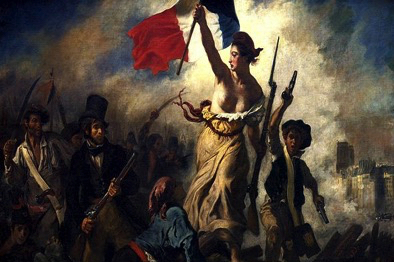Isn’t Over Yet
On April 12, 1861, the Civil War’s first salvo began when the Confederate forces fired upon Fort Sumter. The fort is located on a small island in Charleston Bay. For a day and a half, Fort Sumter received 4,000 rounds from mortars and gun emplacements. The following day the garrison of Fort Sumter surrendered to General Beauregard.

Thus began the Civil War. It was called the Civil War in the North, but it was called the War of Northern Aggression in the South.
While the Union won the war, it lost the piece. In the aftermath of the Civil War, the dual issues of states’ rights and slavery still go essentially unaddressed. America never addressed whether states could override federal law regarding the treatment of blacks in the century following the Civil War. It wasn’t until after Rose Parks before some whites became involved in the civil rights movement. Federal laws changed in 1964 with the Civil Rights Act and in 1965 with the Voting Rights Act.
Blowin’ In The Wind
Bob Dylan
How many roads must a man walk down
Before you call him a man?
How many seas must a white dove sail
Before she sleeps in the sand?
Yes, ‘n’ how many times must the cannon balls fly
Before they’re forever banned?
The answer, my friend, is blowin’ in the wind
The answer is blowin’ in the wind
Yes, ‘n’ how many years can a mountain exist
Before it’s washed to the sea?
Yes, ‘n’ how many years can some people exist
Before they’re allowed to be free?
Yes, ‘n’ how many times can a man turn his head
And pretend that he just doesn’t see?
The answer, my friend, is blowin’ in the wind
The answer is blowin’ in the wind
Yes, ‘n’ how many times must a man look up
Before he can see the sky?
Yes, ‘n’ how many ears must one man have
Before he can hear people cry?
Yes, ‘n’ how many deaths will it take till he knows
That too many people have died?
The answer, my friend, is blowin’ in the wind
The answer is blowin’ in the wind
Dylan wasn’t merely asking a hypothetical or rhetorical question for my white friends while we were in college in the early 60s. People were still dying due to racism in America, a century after the Civil War. It is racism is a systematic issue that we haven’t addressed for four centuries.
This is a sidebar. In the early 70s, I lived in Northeast Pennsylvania. I wanted to buy a special VW Camper. Essentially, it was a VW bus with a top that popped up about three feet at both ends. The only place that I could get one was in New York, a couple of hours drive from my home. A friend of mine drove me to the dealer, and he returned home. I filled out all the forms and paid for the camper. Since I bought the car in New York and lived in Pennsylvania, the VW dealer put a small temporary license in the back window.
I left the dealer and headed back home. However, I wasn’t fifteen minutes from the dealership when I noticed an unmarked cop car with a flashing light on the squad car’s dashboard following me. The cop car pulled up next to me. The two cops weren’t wearing uniforms. The cop, on the passenger side, opened his window and held out his badge so that I could see it as he motioned to pull over. I pulled over, and that cop came up to me and asked for my driver’s license and wanted to know where my license plate was. I explained and gave him the paperwork from the dealer.
Now, I wasn’t worried about getting dragged out of my car, nor was I worried that I might get killed. The reason for my nonchalant attitude was that I wasn’t black. That was fifty years ago. Today, I wonder how many black guys have been pulled over by white cops and killed by cops for not having a license plate in the past half-century.
Lt. Caron Nazario, serving in the U.S. Army Medical Corps, was one very fortunate not to be dead for being stopped because he didn’t have a license plate. However, he had a temporary just like I had when he was pulled over. That being said, he was handcuffed and sprayed with pepper spray while being held at gunpoint.
I wonder how many blacks have been pulled over for issues like a missing license plate or similar reasons in the past half-century.
One closing comment. General Beauregard’s firing on Fort Sumter was the beginning of the Civil War. Beauregard lived in two worlds. One was based upon the tenet that whites are better than blacks. The other world was based upon equality. He lived in his first world until after the Civil War ended. His new world was founded upon equality. Beauregard said of the South and slavery that it was “the planting South and the mellow glories of the ancient regime.” He looked to the future. A couple of decades after the Civil War, a newspaper in Waukesha, Wisconsin, gave him a new name…“the Sir Galahad of Southern Chivalry.”
Follow @mountain_and_me












